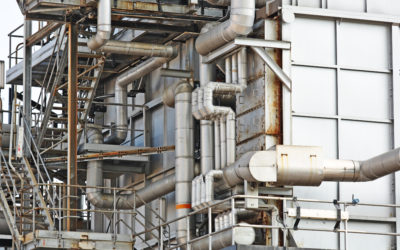The Future of Sustainable Corrosion Control in Industrial Heat Exchangers
Microbial Influenced Corrosion (MIC) is a major issue in industrial systems, particularly in heat exchangers. Metals like copper, stainless steel, and titanium, though valued for their strength and thermal conductivity, are still vulnerable to MIC. MIC occurs when certain bacteria, fungi, or algae accelerate corrosion by altering environmental conditions. This often leads to corrosion hotspots, reduced heat transfer efficiency, and equipment failure.
The Financial and Environmental Costs of Corrosion
Corrosion, including MIC, costs industries trillions of dollars annually. In power plants alone, the cost of corrosion in heat exchangers can reach USD 7 billion. Furthermore, corroded equipment can lead to environmental contamination, accidental leaks of hazardous materials, and, in some cases, catastrophic failures. This highlights the importance of controlling MIC through sustainable solutions that prevent corrosion and reduce environmental impact.
How MIC Occurs in Heat Exchangers
MIC is caused by bacteria that form biofilms on metal surfaces, altering the local environment. Under the biofilm, acidic conditions may develop, creating ideal conditions for corrosion to accelerate. As sulfate-reducing bacteria (SRB) or iron-reducing bacteria (IRB) multiply, they damage the metal by forming sulfuric acid or altering oxygen levels, leading to costly damage.
Traditional Approaches to Corrosion Management
Various strategies have been developed to combat MIC and other forms of corrosion. Physical barriers like coatings, chemical inhibitors, and electrical cathodic protection are common methods. However, these strategies often come with environmental risks, such as the release of harmful chemicals. Other methods, such as upgrading materials to stainless steel or titanium, can be costly and resource-intensive.
A Sustainable Solution: HeatX Surface Treatment
HeatX offers a breakthrough as a sustainable, long-lasting surface treatment that can prevent MIC in heat exchangers. Unlike traditional coatings, HeatX creates a nano-surface that acts as a barrier, preventing bacterial adhesion and the formation of corrosive biofilms. By making the surface hydrophobic and resistant to bacterial growth, HeatX minimizes the conditions that lead to MIC.
Moreover, HeatX is easy to apply, requires minimal surface preparation, and doesn’t contain harmful biocides or heavy metals. This makes it an environmentally friendly option that aligns with industries’ growing focus on sustainability. HeatX can be applied to existing heat exchangers, extending their life and reducing the need for costly repairs or replacements.
Conclusion: The Future of Corrosion Control
Preventing MIC is essential for the longevity of industrial heat exchangers and other critical equipment. By using innovative surface treatments like HeatX, industries can combat MIC while adopting a more sustainable approach. This surface treatment provides a durable, effective solution to corrosion, helping industries save costs and minimize environmental risks. Learn more about HeatX with our experts.



